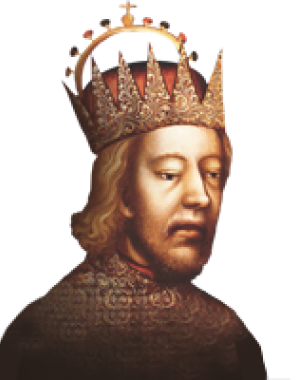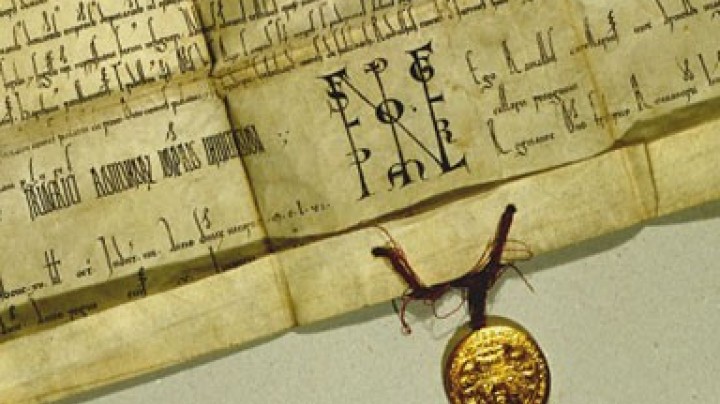Albrecht II: heirs at last
The lack of surviving male heirs threatened the very existence of the young Habsburg dynasty. Five sons had been born to Albrecht and Joan in fifteen years of marriage, but all had died shortly after birth. The dynasty was on the brink of extinction, as none of Albrecht’s five brothers had left surviving male offspring.
As a last resort the couple undertook a pilgrimage to Aix-le-Chapelle, following which their first surviving son, Rudolf, was born in autumn 1339. He was to be followed by three further sons: Frederick III (1347–1362), who died in a hunting accident at the age of fifteen, Albrecht III (1349 or 1350–1393) and Leopold III (1351–1386), under whom the House of Habsburg divided into two lines, a development that Albrecht tried to prevent with a dynastic regulation decreed in 1355, according to which his sons were to rule jointly. Aged fifty-one (!) at the time, Albrecht’s wife died shortly after the birth of her last son.
As well as the three sons, two daughters, Catherine (1342–1387) and Margaret (1346–1366), were born to the couple. The elder girl joined the order of the Poor Clares in Vienna, later becoming mother superior of the convent. The younger daughter Margaret was promised in infancy as the bride of Meinhard III, son of the heir to Tyrol, Margaret Maultasch, from her marriage to Louis of Brandenburg from the Wittelsbach dynasty. Despite her husband’s early death in 1363 this marriage provided a further argument for the assumption of power in Tyrol by the Habsburgs in 1365.
Margaret later married into the Luxembourg dynasty, the rivals of the Habsburgs in the Empire and in Tyrol. Her husband was John Henry, Margrave of Moravia, a brother of Emperor Charles IV. A curious detail here was that Henry had previously been married to Margaret Maultasch; marked by massive antipathy between the couple, the marriage was finally dissolved on the grounds of non-consummation following a complicated and long-drawn-out canonical case.















